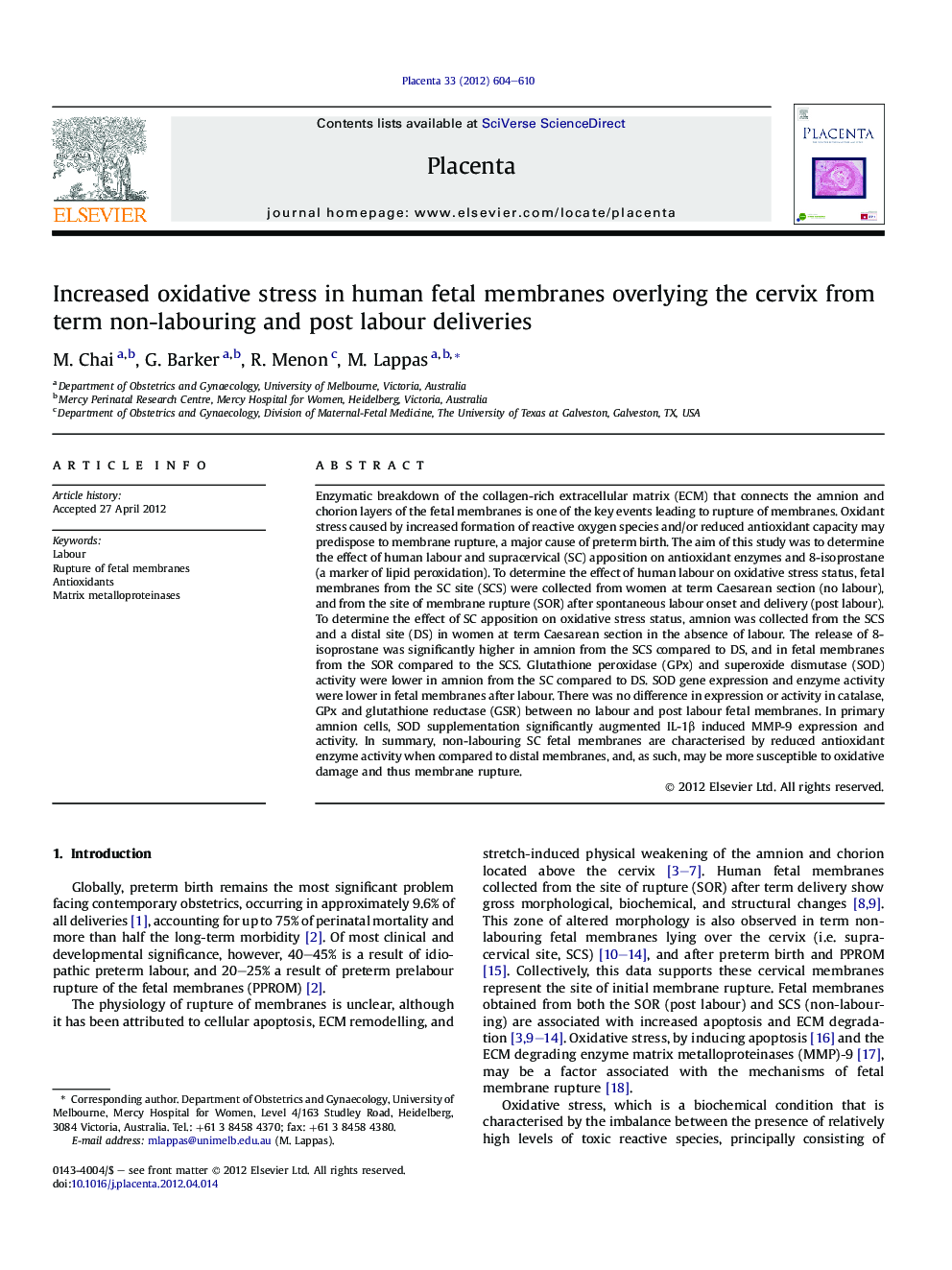| Article ID | Journal | Published Year | Pages | File Type |
|---|---|---|---|---|
| 5895920 | Placenta | 2012 | 7 Pages |
Abstract
Enzymatic breakdown of the collagen-rich extracellular matrix (ECM) that connects the amnion and chorion layers of the fetal membranes is one of the key events leading to rupture of membranes. Oxidant stress caused by increased formation of reactive oxygen species and/or reduced antioxidant capacity may predispose to membrane rupture, a major cause of preterm birth. The aim of this study was to determine the effect of human labour and supracervical (SC) apposition on antioxidant enzymes and 8-isoprostane (a marker of lipid peroxidation). To determine the effect of human labour on oxidative stress status, fetal membranes from the SC site (SCS) were collected from women at term Caesarean section (no labour), and from the site of membrane rupture (SOR) after spontaneous labour onset and delivery (post labour). To determine the effect of SC apposition on oxidative stress status, amnion was collected from the SCS and a distal site (DS) in women at term Caesarean section in the absence of labour. The release of 8-isoprostane was significantly higher in amnion from the SCS compared to DS, and in fetal membranes from the SOR compared to the SCS. Glutathione peroxidase (GPx) and superoxide dismutase (SOD) activity were lower in amnion from the SC compared to DS. SOD gene expression and enzyme activity were lower in fetal membranes after labour. There was no difference in expression or activity in catalase, GPx and glutathione reductase (GSR) between no labour and post labour fetal membranes. In primary amnion cells, SOD supplementation significantly augmented IL-1β induced MMP-9 expression and activity. In summary, non-labouring SC fetal membranes are characterised by reduced antioxidant enzyme activity when compared to distal membranes, and, as such, may be more susceptible to oxidative damage and thus membrane rupture.
Related Topics
Life Sciences
Biochemistry, Genetics and Molecular Biology
Developmental Biology
Authors
M. Chai, G. Barker, R. Menon, M. Lappas,
